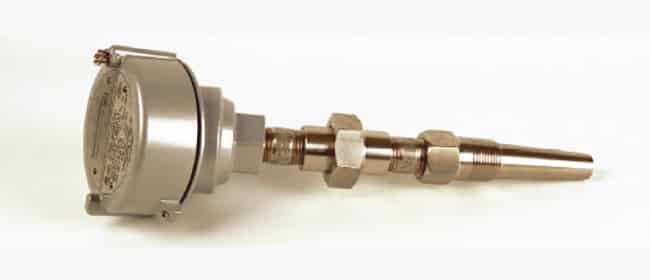
Problem:
Field technicians were spending too much time calibrating RTDs on gas transmission pipelines. With their current setup, the technicians had to disconnect the leads to the RTD from the RTU so that they could remove the RTD from the thermowell and calibrate it in a water bath. This process was adding extra time to a simple task, and introducing the possibility for error when reconnecting the leads to the RTD assembly. The CLASS-1, DIV-1 requirements for the instrumentation limited the field of products that could be substituted. This issue was recognized as a significant problem, driving up overhead and repair time.
Solution:
The first element of the solution was replacing their current RTD with Thermo Sensors’ spring-loaded RTD assembly with union. This allowed the RTD to be removed from the thermowell without disconnecting the leads from the RTU unit. The second component was coupling the Thermo Sensor RTD with stainless steel armored leads. This provided the technician with more maneuverability of the RTD when calibrating the unit in a water bath. In conjunction, these two products would eliminate the need to disconnect leads and give the technicians the flexibility to complete their calibrations while meeting the requirements of a CLASS-1, DIV-1 area.
Result:
The implementation of the setup decreased mistakes and the time it took technicians to calibrate by almost 50%. Calibrating the RTDs system-wide takes approximately two man years of labor. The new RTDs with MI cables reduced this process by one man year. Realizing a conservative estimate of a technician’s wages at $15/hour at 2,080 hours, for a year, this would show the company a projected savings of $31,200/ year.

